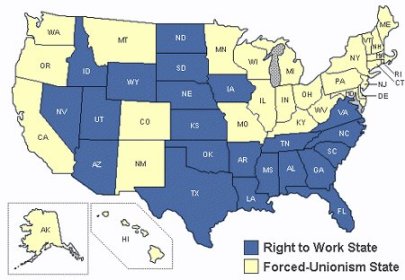Automakers: Mind What You Wish For
How can we lay the U.S. automaker crisis at the feet of the Republicans who were in control of the government for the past 14 years? How about this.
The Big Three, whose method of operating has been, and is likely to continue to be, one of aiming for instant gratification, were aided and abetted by the Republicans and their decades-long drive to emasculate labor unions in the United States.
That, of course, contradicts the conventional wisdom that has become a religion among the Big Three (why do we call them that any more—they’re the only three). The automakers have complained and complained the United Auto Workers and its demands on behalf of the union’s workers are what have hurt their industry.
To be sure, the UAW did overreach in the heydays of the 1950s and 60s and became so strong they also became their own worst enemies and needed to be trimmed back a bit.
But the UAW would say, and we would agree, that the Big Three were unable to compete with foreign automakers on U.S. soil because the foreign firms built their plants in “right-to-work” states. Whatever union that workers in those plants may have pales by comparison with the UAW.
How did those right-to-work states come into being? In the wake of the industrial revolution born at the end of the 19th century, labor unions were formed to redress the greedy excesses of their employers who were operating as fief to serf.
Until the Taft-Hartley Act in 1947, workers and their employers thrived quite well with union rights to require workers to support the unions. Soon after the act was passed, taking away those union rights, 12 states enacted “right-to-work” laws and another 10 states have followed as Republican Party policy relentlessly defeated Democratic and union efforts to repeal Taft-Hartley.
The result has been that average wages for workers in right-to-work states are 6.5 percent lower than those of their counterparts in states that have not enacted the laws. Of course, they attracted foreign automakers, and Toyota opened the first of its 13 U.S. plants in 1989. An overlay of right-to-work states today closely matches the map of what the red (GOP-voting) states before the election just completed.
With the gas-shortage crisis of the mid-1970s and the popularity of more fuel-efficient and safer cars produced by foreign automakers, who also employed features U.S. automakers would have included had they not (thanks to the leadership of Democrat John Dingell) defeated congressional efforts to require them, Americans began turning to the better cars once made abroad, but now made at home with foreign-sounding names.
As the 1970s crisis waned, Instead of looking ahead as Toyota and Honda did, U.S. automakers went for the bigger instant bucks and began pushing sales of SUVs and huge macho trucks, neither of which got anywhere near the gas mileage foreign makers continued to offer.
And now U.S. automakers are asking for help from the same federal government they joined their GOP friends in beating on so unmercifully for decades.
(from www.straightrecord.com)
